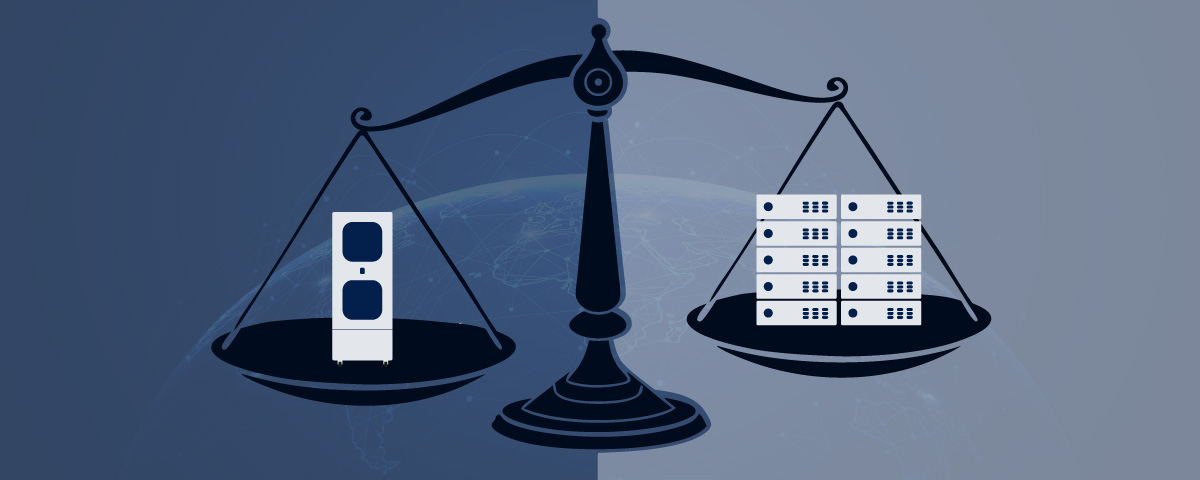The public cloud has enjoyed widespread popularity in recent years, offering organisations scalable and flexible solutions. However, as technology evolves, it has become evident that a one-size-fits-all approach might not be the best fit for every business. Many companies now realise the value of retaining control over their most sensitive and critical data by moving it on-premise. As a result, hybrid cloud has emerged as a compelling solution, bridging the gap between on-premise infrastructure and the public cloud.
In 2021, an increasing number of organisations recognised the benefits of hybrid cloud. According to a report by TechRepublic, over 60% of organisations were either using or piloting hybrid cloud and more than 30% were actively planning to do so.
Key drivers: security and data sovereignty
While the allure of the public cloud remains strong, data sovereignty and security concerns have become significant drivers for decision-makers to opt for hybrid cloud solutions. A report by Nutanix reveals that the top three drivers for adopting hybrid cloud are:
- Cybersecurity (38% of respondents) – With the ever-increasing number of cyber-attacks, businesses prioritise robust cybersecurity measures to safeguard their sensitive data and applications.
- Data protection and recovery (32% of respondents) – Data is an invaluable asset; ensuring its protection and having efficient recovery mechanisms in place is paramount for maintaining business continuity.
- Data sovereignty (30% of respondents) – Compliance with data regulations and retaining control over data within specific geographical boundaries is crucial for organisations that operate across
different jurisdictions.
Overcoming complexity with micro data centres
Operating a hybrid cloud and distributed IT environment introduces complexities due to the diverse infrastructure involved, but businesses can minimise these challenges with the right technology.
For example, micro data centres (also known as MDCs) can simplify the complexity of hybrid cloud environments in many ways:
Data sovereignty and compliance: as we’ve seen, data sovereignty laws and compliance requirements may necessitate keeping certain data within specific geographic boundaries. MDCs allow organisations to maintain data locally while still benefiting from the broader capabilities of the hybrid cloud, helping them meet regulatory demands without overcomplicating the architecture.
Proximity to edge: MDCs are designed to be placed right at the centre of the action, reducing latency and improving the overall performance of cloud-based applications and services.
Reduced network traffic: By handling some processing and storage tasks locally, MDCs reduce the amount of data that needs to traverse the network to reach the central cloud. This not only saves bandwidth but also helps in optimising the use of network resources, leading to a simpler and more efficient hybrid cloud setup.
Decentralised management: MDCs can be managed centrally but can also function autonomously with some localised management capabilities. This decentralisation of management helps simplify the overall administration and monitoring of the hybrid cloud infrastructure, as organisations can manage edge locations independently while integrating with the central cloud infrastructure when required.
Flexibility and scalability: MDCs are modular and easily scalable. Depending on demand, organisations can easily add or remove micro data centres as needed. This flexibility streamlines the expansion and management of the hybrid cloud infrastructure.
Resilience and redundancy: MDCs can provide local resilience and redundancy, reducing the dependency on a single central data centre. This distributed approach enhances overall reliability.
Future-proofing digital transformation
Data sovereignty is not just a compliance checkbox; it’s a foundational pillar for businesses navigating the digital landscape. Embracing the hybrid cloud allows organisations to retain control over their most sensitive data, ensuring it remains within specific geographic boundaries.
The hybrid cloud’s flexibility and security make it a compelling choice for businesses with varying workloads and sensitive data. As technology evolves, hybrid multi-cloud infrastructure is predicted to become the dominant model. Embracing this approach allows organisations to tailor their cloud strategy to meet specific needs, all while ensuring data security and compliance.
As businesses continue to embrace digital transformation, a hybrid cloud strategy is proving to be a future-proof solution. Hybrid cloud and micro data centres enable companies to optimise costs, maintain data sovereignty and ensure business continuity, making the pairing a mainstream choice for organisations worldwide.
*This article was first published on EdgeIR on 7 August 2023.






